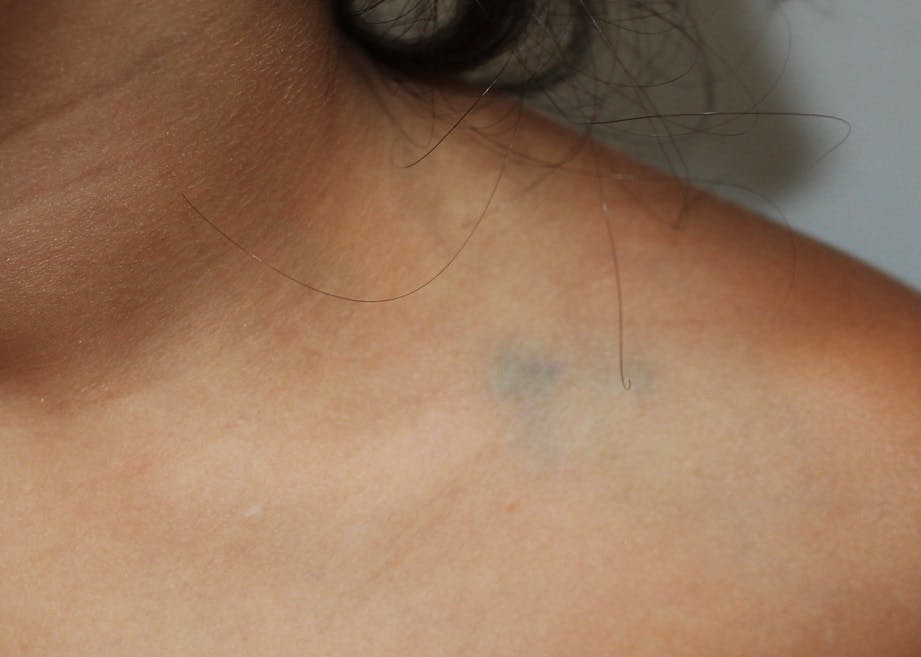
Learn to identify venous malformations, a prevalent vascular anomaly with potential health risks if neglected. Gain valuable insights on recognizing its symptoms in this informative guide. Don’t gamble with your health—read on to stay informed.
Understanding Venous Malformation and Its Symptoms
Venous malformations, a subset of vascular malformations, are abnormalities within blood vessels that primarily affect veins. These malformations occur during fetal development when veins don’t form properly, leading to clusters of abnormal blood vessels in soft tissues. Unlike normal veins that efficiently carry venous blood back to the heart, these abnormal vessels have irregular structures, hindering proper blood flow. Recognizing venous malformations can be challenging as symptoms vary widely. Patients might experience swelling, pain, or a visible bluish discoloration on the skin due to the abnormal veins. However, some cases might remain asymptomatic for years, and complications such as blood clots or heart failure can arise. Accurate diagnosis often involves imaging tests like MRIs or ultrasounds alongside a thorough understanding of the patient’s medical history.
Treatment options for venous malformations aim to manage symptoms and prevent complications. Medical treatments like compression therapy may alleviate discomfort, but for cases requiring intervention, laser treatments or sclerotherapy (injection of a special solution into the vessels) may be employed to shrink or close off the abnormal vessels. In severe instances where the malformation poses risks to health or functionality, surgical removal or embolization (blocking the blood vessels) might be necessary. A correct diagnosis is crucial for tailoring an effective treatment plan that addresses the specific characteristics and potential complications of venous malformation while considering the patient’s overall health and well-being.
Step 1: Acknowledge the Importance of Identifying Venous Malformations
Detecting venous malformations is vital due to their impact on soft tissue and blood flow. Abnormal veins disrupt circulation, leading to swelling and potential damage. Early identification allows for timely intervention, starting with treatments like compression therapy or lasers to manage symptoms and prevent complications in deep veins. Addressing these veins promptly mitigates risks associated with compromised blood flow, preserving vascular health and tissue functionality.
Step 2: Recognizing the Physical Signs of Venous Malformations
Recognizing venous malformations often involves a thorough physical exam for telltale signs such as blue rubber-like lesions on the skin. These lesions, varying in size and texture, might be visible or felt upon touch. Additionally, children presenting with vein-related abnormalities might exhibit signs like altered blood pressure in affected areas or experience symptoms like shortness of breath due to compromised circulation. A keen observation during a physical assessment can unveil these distinct markers, prompting further investigation and timely intervention to manage these vascular irregularities effectively.
Step 3: Look for Swelling or Lumps
Swelling or lumps are telltale signs of venous malformations. Patients often report these symptoms, leading to further examination and diagnosis. The presence of such abnormalities can cause discomfort and pain, affecting daily routines. Venous malformations may appear anywhere on the body, but they can often go unnoticed when concealed in the legs or hidden areas.
Identifying venous malformations based on these symptoms calls for a careful and thorough examination. Ignoring or downplaying such noticeable signs can lead to complications. It is therefore recommended not to delay a medical check-up if you notice any persistent swelling or lumps, especially if they are accompanied by pain or discomfort.
Step 4: Monitoring the Development of Skin Discoloration
Skin discoloration is one crucial symptom to help identify venous malformations. This usually takes the form of bluish or reddish coloration, indicating irregular blood circulation. The discoloration’s progression can signify the malformation’s growth or worsening condition. Regular close examination is crucial to track any changes in skin color, which might slip unnoticed in the early stages. The discoloration often follows a pattern that correlates to the underlying venous malformations, making it a reliable indicator for tracking the condition’s development. Prompt recognition of this symptom and immediate medical attention can prevent complications associated.
Step 5: Noticing Varicose Veins
Varicose veins are visible, swollen veins that often appear on the legs. They can signify underlying venous malformation signs. These dilated veins are more than just a cosmetic concern, they may hint at an issue deeper within the venous system. Thus, it’s crucial to pay attention to this potential symptom of venous malformation. Varicose veins caused by venous malformations often show symptoms like heaviness and a continuous sense of discomfort. Therefore, if varicose veins are accompanied by these attributes, they can indeed indicate underlying venous malformation symptoms.
Step 6: Observing Changes in Venous Malformation Over Time
A critical part of identifying venous malformations lies in observing the malformation over time. Subtle changes may reveal much-needed insight, often helping corroborate suspicions. Regularly monitoring and tracking the evolution of symptoms could prove pivotal in accurate diagnosis.
It is advisable to note any visible size progression, changes in coloration, or the degree of discomfort. This exercise allows a more detailed presentation of the malformation to the medic, providing them with essential clues for diagnostic purposes. Time plays a significant role in this condition, and detailed observation reflects subtle changes that may easily go unnoticed.
Step 7: Get Medical Help
Seeking medical help for venous malformations involves a comprehensive approach guided by clinical diagnosis and imaging techniques like magnetic resonance imaging (MRI) to assess the extent of abnormalities and abnormal blood flow. Treatment strategies are tailored to individual cases, considering factors like flow lesions, complex or deep lesions, and potential systemic complications. Therapeutic options range from laser therapy, often in combination with sclerotherapy, to more intricate approaches like endoscopic management for deeply seated malformations. The aim is not just symptom management but also preserving normal function and preventing long-term complications. Through a personalized treatment plan, healthcare providers strive to optimize outcomes, ensuring effective control of symptoms and minimizing the risks associated with venous malformations for improved long-term results.

Step 8: Follow-Up With Regular Check-Ups
Regular medical check-ups are crucial to monitor the status of venous malformations. These appointments provide an opportunity for your doctor to detect any changes in the malformation early. This can lead to timely intervention, preventing potential complications.
Furthermore, check-ups give you a chance to discuss any new symptoms or discomfort you might be experiencing. This ensures that you receive the most effective treatment plan for your condition. Regular monitoring of a venous malformation through check-ups aids in managing it effectively and mitigating risks associated with its progression.
Step 9: Understand the Potential Complications of Venous Malformations
Venous malformations, if untreated, lead to complications like chronic pain, disfigurement, and potential health risks such as skin ulcers and blood clots. Vigilant identification and treatment are crucial to prevent severe outcomes, including life-threatening events.
Identifying these malformations involves observing physical signs like swelling, skin discoloration, and varicose veins, alongside symptoms like discomfort or pain points. Changes in size or growth over time indicate a developing malformation, emphasizing the need for prompt medical attention and regular check-ups for monitoring. Consulting healthcare professionals is paramount for proper intervention.
Advice: Don’t Ignore Persistent and Unexplained Symptoms
Ignoring persistent and unexplained symptoms of venous malformations can lead to severe complications. This condition, often marked by pain, swelling, and skin discoloration, can progress if left untreated. These symptoms might not seem alarming at first, but they usually indicate a significant internal issue relating to your veins. Consult with your healthcare provider as soon as your symptoms persist, or if they deteriorate over time. Remember, early detection and treatment of venous malformations can prevent the risk of complications and improve your quality of life.
To correctly identify and understand venous malformations, enlisting a seasoned expert like Dr. Andre Panossian can make all the difference. His vast experience and profound expertise inject confidence into the healthcare journey. Achieve that much-needed peace of mind knowing your health is in expert hands. Reach out to Dr. Andre Panossian for a professional medical consultation today.


